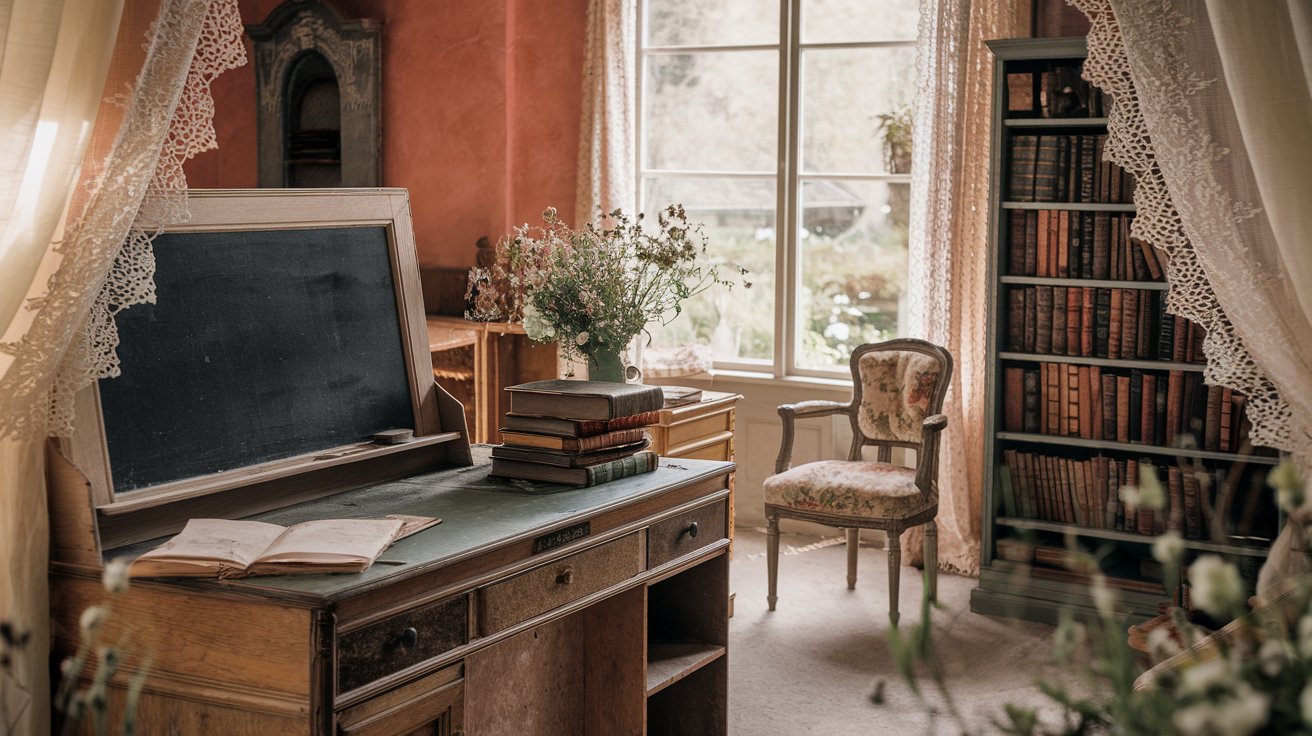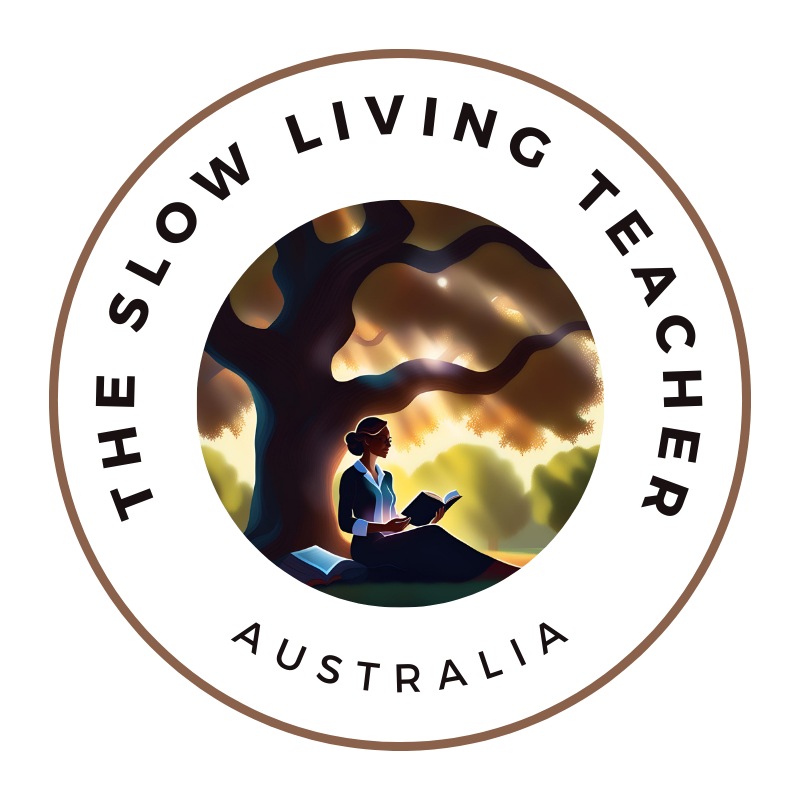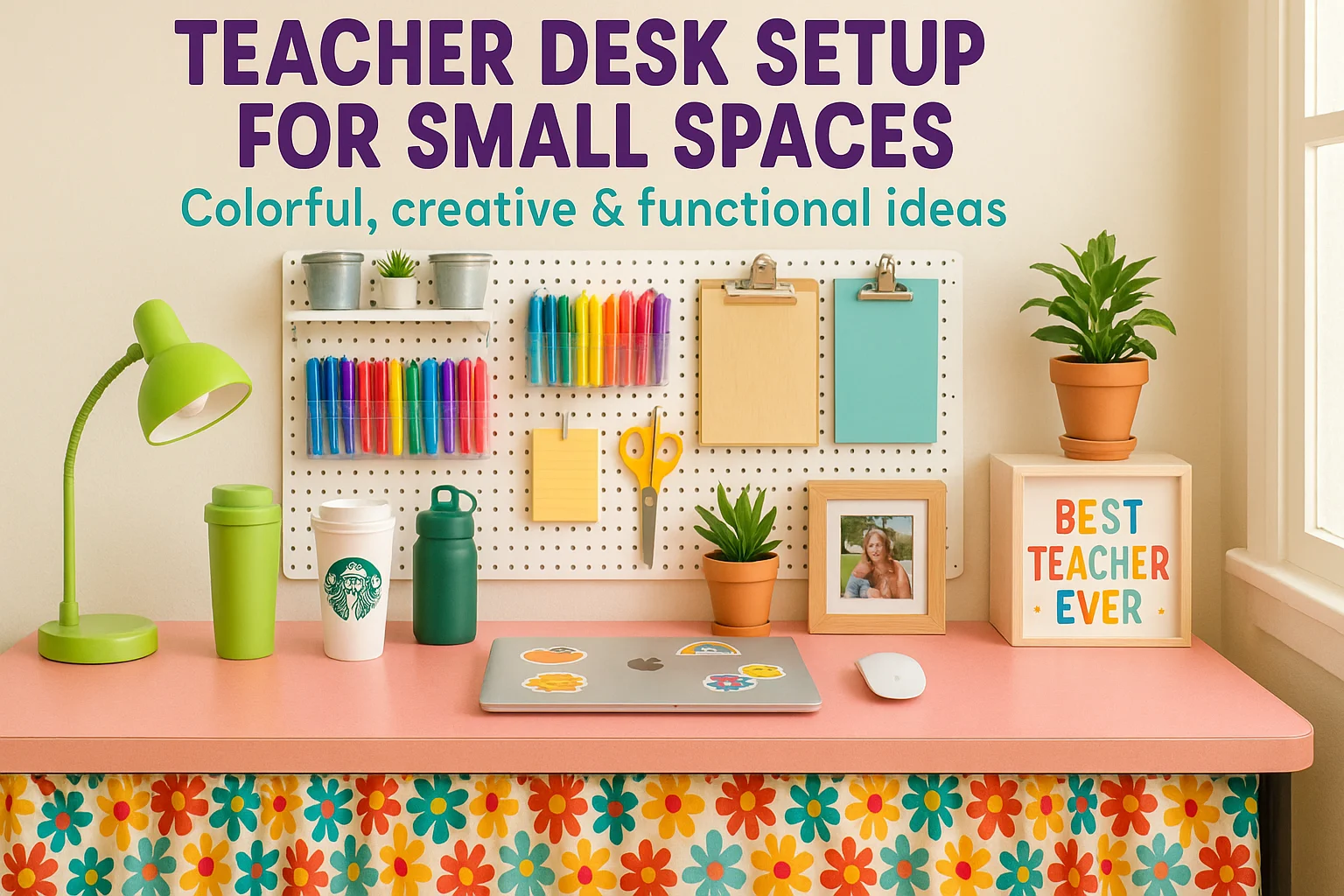Your cart is currently empty!

Vintage Teacher: Embrace Slow Living & Work-Life Balance
Empower your journey as a vintage teacher with actionable tips on work-life balance, slow living, and career transition. Start your path to a simpler, more fulfilling life today.
This post may contain affiliate links. At no cost to you, I may earn a small commission if you click on any affiliate link within my blog.
Have you ever felt like the world is moving too fast, and you’re struggling to keep up? As teachers, we often pour our hearts into our work, leaving little room for ourselves. But embracing the vintage teacher mindset can help you reclaim your time and find balance.
What if teaching didn’t have to feel so rushed and overwhelming? What if you could embrace a slower, more intentional way of working, one that leaves room for rest, joy, and the things that truly matter?
By incorporating vintage-inspired practices, like slowing down, simplifying my routines, and bringing a vintage teacher approach to my days, I have tried to rediscover balance and ease in my teaching.
Imagine embracing a simpler way of life, one that blends the charm of the past with the demands of today. The “vintage teacher” approach is about more than just aesthetics; it’s a mindset that encourages mindfulness and intention in both your professional and personal life.

This approach isn’t about going backward but moving forward with clarity. By incorporating vintage-inspired practices, you can create a routine that honors your well-being and fosters a deeper connection with your work and loved ones.
In this article, I’ll explore how to merge nostalgic style with modern demands, prioritize self-care, and adopt reflective practices. You’ll discover actionable strategies to achieve a balanced life that feels both fulfilling and sustainable.
So, let’s embark on this journey together. It’s time to redefine what it means to be an educator and find joy in the simplicity of slow living.
Key Points
- Discover how a vintage-inspired approach can enhance your work-life balance.
- Learn to blend nostalgic style with modern educational demands.
- Explore the importance of self-care and reflective practices for educators.
- Gain actionable strategies for embracing slow living.
- Find empowerment in prioritizing your well-being without guilt.

Introduction to the Vintage Teacher Lifestyle
In today’s fast-paced world, educators often find themselves stretched thin. The vintage teacher lifestyle offers a refreshing alternative, blending classic charm with modern mindfulness to foster balance and fulfillment.
Defining the Vintage Aesthetic
The vintage aesthetic in teaching isn’t just about style; it’s a mindset. It embodies simplicity, intentionality, and a connection to the past. Think classic decor, timeless fashion, and a focus on what truly matters.
- Warm, earthy tones and natural textures like wood and linen.
- Timeless fashion with tailored pieces and subtle patterns.
- A focus on quality over quantity, reflecting deeper values.

The Journey Towards Slow Living
Transitioning to slow living is a personal journey of self-discovery. It’s about embracing mindfulness and intention in both professional and personal life, leading to improved work-life balance.
- Start small: Incorporate one mindful practice daily.
- Reflect: Journal or meditate to gain clarity.
- Connect: Engage with loved ones and nature.
This journey isn’t about regression but progressing with purpose, finding joy in simplicity and fulfillment in balance.
Understanding Slow Living for Teachers
What does slow living mean for educators? It’s about finding balance in a fast-paced world. By embracing a slower pace, teachers can reduce stress, improve focus, and create a more engaging classroom environment.
Benefits of Embracing a Slower Pace
- Reduced stress and improved well-being.
- Enhanced focus and productivity in the classroom.
- Increased student engagement through mindful teaching practices.

Mindfulness in Education
Mindfulness can transform teaching practices. Simple techniques like deep breathing or reflection can create a calm, focused classroom atmosphere. For example, starting the day with a mindful moment can set a positive tone for both teachers and students.
Reflecting on your teaching practices and personal well-being can lead to a more balanced life. By incorporating mindfulness into lesson planning and daily routines, educators can create a more intentional and fulfilling career.
Vintage Teacher: Embracing Work-Life Balance
Creating a harmonious balance between work and personal life is essential for educators seeking fulfillment. The vintage teacher approach offers practical strategies to help you manage your time effectively while staying true to your values.
Practical Strategies for Daily Practice
- Time Blocking: Allocate specific hours for work, personal time, and self-care. Use a planner or digital tool to stay organized.
- Boundary Setting: Clearly define your work hours to protect your personal time and well-being.
- Morning Routine: Start your day with a mindful practice, such as journaling or meditating, to set a positive tone.
Time Management for Educators
Incorporating vintage-inspired practices can enhance your daily routine. For example, using a paper planner can help you stay focused and intentional with your time.
| Strategy | How It Helps |
|---|---|
| Time Blocking | Helps prioritize tasks and protect personal time. |
| Boundary Setting | Ensures work doesn’t encroach on personal well-being. |
| Morning Routine | Creates a mindful start to the day, improving focus. |
By implementing these strategies, you can achieve a balanced life that honors both your professional and personal commitments. Remember, taking care of yourself is a necessity for a fulfilling career and life.

Transitioning Your Teaching Career with a Vintage Touch
Are you considering a change in your educational career? Transitioning can be both exciting and intimidating, but it’s also a chance to explore new opportunities that align with your passions and strengths.
Identifying Transferable Skills
Educators possess a unique set of skills that are highly valued in various fields. Whether you’re moving into a different educational role or exploring opportunities outside the classroom, your experience provides a strong foundation.
- Communication: Crafting clear, engaging lessons translates well to roles in writing, public speaking, or corporate training.
- Organization: Managing lesson plans and classroom activities can apply to project management or administrative roles.
- Empathy: Understanding student needs fosters strong interpersonal skills, beneficial in counseling or community work.
To make a successful transition, start by assessing your strengths and interests. Ask yourself:
- What activities make me feel most fulfilled?
- How can I align my skills with new opportunities?
- What steps can I take today to move closer to my goals?
Embracing change with a nostalgic yet forward-thinking mindset can lead to a more fulfilling career. View this transition as a chance to grow and renew your professional journey, bringing the wisdom and experience of your teaching career into new and exciting realms.

Old-School Teaching Methods
In an era of digital learning and fast-paced curriculum demands, old-school teaching methods, such as explicit teaching, offer a refreshing way to slow down and bring more intention into the classroom.
These tried-and-true approaches emphasize connection, reflection, and deep learning, qualities often lost in modern education’s rush to cover more content.
1. Use Chalk and Talk for More Mindful Lessons
- Swap out digital presentations for a whiteboard at least once a week.
- Write key points and diagrams by hand while explaining concepts to encourage slower, more intentional learning.
- Have students copy notes manually instead of relying on pre-made slides to help them retain information.
- Use this method for subjects that benefit from visual step-by-step explanations, like math or grammar.
2. Handwrite Lesson Plans & Notes for Thoughtful Teaching
- Choose a vintage-style planner or a high-quality notebook for your lesson plans.
- Set aside 10 minutes each morning to jot down key lesson points by hand instead of typing them.
- Handwrite feedback on student work occasionally to add a more personal, thoughtful touch.
- If grading or planning feels overwhelming, use a fountain pen or favorite stationery to make the process more enjoyable.
3. Incorporate Read-Alouds & Storytelling to Engage Students
- Pick one lesson per week where you read a passage from a classic text or the content from a textbook chapter instead of summarizing it.
- Slow down and use expressive storytelling techniques. Vary your tone, pause for effect, and invite discussion.
- Encourage students to close their laptops and listen, taking occasional handwritten notes instead of typing.
- Connect the story to your lesson theme by asking students reflective questions before and after the reading.
4. Use Socratic Discussions to Slow Down & Deepen Learning
- Emphasize quality over speed, reward thoughtful contributions over quick responses.
- Dedicate one lesson per week to a Socratic discussion format.
- Start with an open-ended question that requires deeper thought, such as “What would happen if…?”
- Give students 30 seconds of silent reflection before answering to encourage more intentional responses.
- Allow follow-up questions and encourage students to respond to each other rather than looking to you for answers.
By integrating these nostalgic teaching practices, educators can step back from the constant pressure of modern education and create a more meaningful, slow-paced classroom experience.

Curating a Vintage-Inspired Teacher’s Desk
Your teacher’s desk is more than just a workspace, it’s the heart of your classroom, where lessons are planned, ideas come to life, and moments of quiet reflection happen. A vintage-inspired setup can add warmth, charm, and a sense of calm to your daily routine. Here’s how to style your desk with classic, slow-living elements:
Vintage Desk Staples
- Antique Desk Organizer – Look for wooden or brass organizers at thrift stores or shop vintage-inspired ones on Amazon. These add character and keep your space tidy.
- Classic Fountain Pen & Ink Set – Swap out your usual ballpoint for a fountain pen with rich, flowing ink. Writing with one naturally slows you down and adds an elegant touch to note-taking.
- Retro-Inspired Planner – A leather-bound or cloth-covered planner with dated pages and space for handwritten notes is both stylish and practical. Look for vintage-style planners online.
- Old-Fashioned Desk Lamp – A warm, soft-glow lamp in an antique brass or green banker’s lamp style can transform your desk into a cozy workspace.
Thrifted Finds & Amazon Picks
- Vintage Bookends – Find old-fashioned bookends at thrift shops to hold lesson plan books or inspirational reads.
- Classic Wooden Pencil Holder – A repurposed mason jar or an old tin can be used as a charming pencil cup.
- Letterpress Stamps & Wax Seals – Perfect for adding a nostalgic touch to student feedback or classroom notes.
- Retro-Inspired Bulletin Board – A cork or fabric-covered pinboard with vintage push pins can display inspiring quotes or slow-living reminders.
A well-curated teacher’s desk doesn’t just look beautiful, it sets the tone for a more mindful, intentional teaching experience. Whether you’re hunting for second-hand treasures or sourcing vintage-style pieces online, your desk can become a reflection of slow living in education.

Incorporating Vintage Aesthetics in Classroom Design
Transforming your classroom into a space that inspires both you and your students doesn’t have to break the bank. By thoughtfully blending vintage elements with modern functionality, you can create an environment that fosters engagement and comfort.
Sourcing Authentic Vintage Decor
Discovering authentic vintage decor can be an exciting adventure. Thrift stores, flea markets, and online vintage collections are treasure troves for unique pieces. Look for items like classic chalkboards, vintage globes, or antique desks that add character to your classroom.
- Thrift Stores: Great for finding affordable, one-of-a-kind items.
- Flea Markets: Ideal for discovering larger pieces like vintage furniture.
- Online Collections: Websites specializing in vintage goods offer convenient shopping.
When you find a gem, a quick clean or light restoration can make it ready to use without losing its charm.
DIY Projects for a Classic Classroom
DIY projects are a great way to infuse your teaching space with vintage flair. Try upcycling old suitcases into storage units or transforming vintage windows into decorative pieces. These projects are simple and add a personal touch.
- Suitcase Storage: Stack vintage suitcases to create a unique storage solution.
- Window Decor: Hang an old window and add photos or quotes for inspiration.
These DIY projects not only personalize your space but also encourage creativity and sustainability.
| Approach | Benefits |
|---|---|
| Authentic Vintage Decor | Adds unique character and visual interest. |
| DIY Projects | Promotes creativity and sustainability. |
A well-designed classroom with vintage touches can boost student engagement and well-being. Encourage experimentation and personalization to make the space truly yours, reflecting your unique style and creating a welcoming environment for everyone.
Real Success Stories from Vintage Educators
Let’s hear from Sarah, a high school history teacher who found balance through slow living:
- Sarah’s Story: By adopting a mindful morning routine and restructuring her classroom with vintage decor, Sarah reduced her stress levels and improved student engagement.
Another example is Emily, an elementary school teacher who focused on work-life boundaries:
- Emily’s Story: Emily prioritized her well-being by setting clear work hours and incorporating vintage-inspired lesson plans, leading to a more fulfilling career and personal life.
Practical Advice from Educators
- Start with small, intentional changes to avoid overwhelm.
- Invest in a quality planner to stay organized and mindful.
- Engage with like-minded educators for support and inspiration.
These stories highlight the positive impact of embracing a slower, more intentional lifestyle. The supportive community around this movement encourages educators to prioritize their well-being and create meaningful change in their professional and personal lives.
Expert Tips for a Balanced and Fulfilling Teaching Journey
To thrive in this journey, it’s essential to cultivate the right mindset and strategies that support both your professional and personal well-being.
A positive and resilient mindset is the foundation of a fulfilling teaching career. Here are some expert tips to help you stay motivated and balanced:
- Start Small: Incorporate one mindful practice daily, such as journaling or meditating, to create a positive tone for the day.
- Reflect Regularly: Use reflection to gain clarity on your goals and challenges, helping you stay focused and intentional.
- Set Boundaries: Clearly define your work hours to protect your personal time and well-being.
By implementing these strategies, you can achieve a balanced life that honors both your professional and personal commitments. Remember, taking care of yourself is a necessity for a fulfilling career and life.

Conclusion
As we wrap up our journey through the world of slow living and work-life balance, remember that embracing a mindful approach is a powerful step toward a fulfilling career and personal life. The strategies I’ve explored, from time blocking to vintage-inspired decor, offer practical ways to create a balanced routine that honors your well-being and professional commitments.
By blending the charm of the past with modern practices, you can craft a unique style that reflects your values and empowers your teaching journey. Whether it’s through a thoughtful morning routine or a beautifully designed classroom, these elements come together to create a meaningful and intentional environment.
Take the next step today. Explore further resources, connect with like-minded educators, and start implementing the tips shared here. Remember, slow living is a sustainable way to thrive in both your personal and professional life. Embrace this journey with confidence and joy, knowing that balance and fulfillment are within reach.




